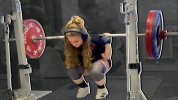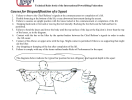Boris Bachmann
Level 8 Valued Member
It used to be that the bar had to be on the shoulders and there were (iirc, at least in the feds I completed in) rules that explicitly stated that the bar could be placed on the back no lower than the profile of the shoulder. Maybe it's just my old man memory, but I know Ernie Frantz writes something to that effect in his classic book on powerlifting - I'll try to be more thorough and fact-check these things later...
Anywho, over the past couple of years, I see more and more younger powerlifters doing a very very low bar squat essentially wedging their upper arms against their sides, placing the bar across the triceps, and supporting the weight w. the propped arms and copious wrist wraps - turning what was a squat into what more closely resembles a leg press of sorts.
I gotta be honest here - I try very hard to be non-denominational when it comes to barbell squatting, bar placement, supportive equipment, and even depth but ermahgerd does it look terrible. Yeah, I guess they can stand more or less upright but they're not....
Tiffany Chapon was one of the first that I saw doing this kind of squat (pictured below)...

but this girl, Ottilia Blom, really upped the ante on it:
Anywho, over the past couple of years, I see more and more younger powerlifters doing a very very low bar squat essentially wedging their upper arms against their sides, placing the bar across the triceps, and supporting the weight w. the propped arms and copious wrist wraps - turning what was a squat into what more closely resembles a leg press of sorts.
I gotta be honest here - I try very hard to be non-denominational when it comes to barbell squatting, bar placement, supportive equipment, and even depth but ermahgerd does it look terrible. Yeah, I guess they can stand more or less upright but they're not....
Tiffany Chapon was one of the first that I saw doing this kind of squat (pictured below)...

but this girl, Ottilia Blom, really upped the ante on it:

